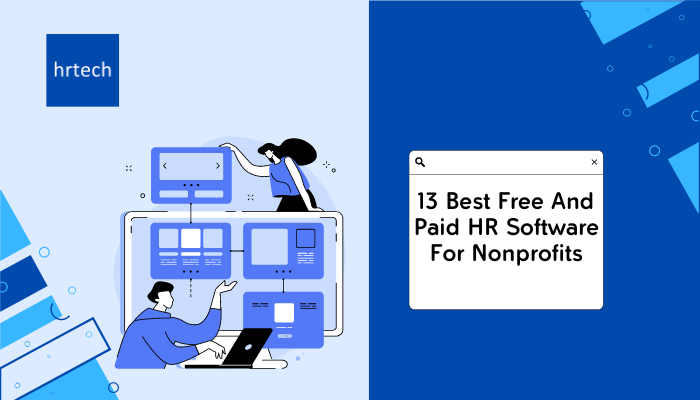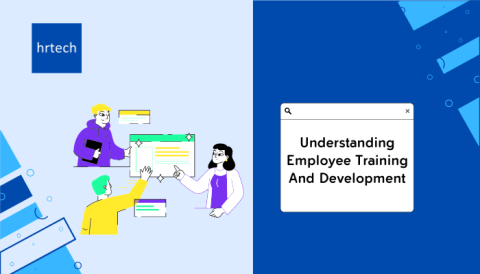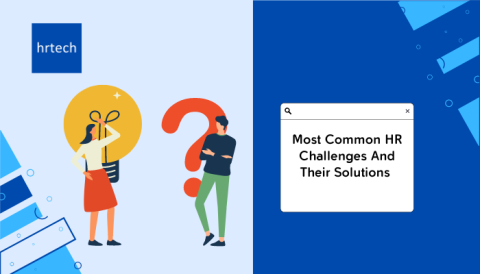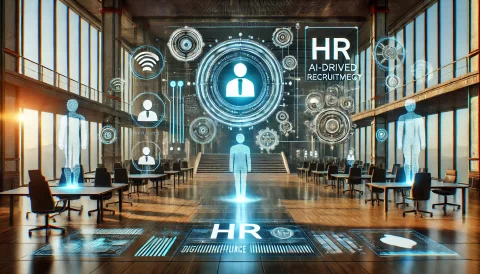Imagine this:
you’re in the zone, crafting a brilliant recruitment strategy, when ping – an email notification disrupts your flow. Sound familiar? In today’s digital age, distractions are everywhere, making it a constant battle to stay focused and productive.
A study by Udemy’s In Depth: 2018 Workplace Distraction Report found that a whopping 84% of workers estimate they can’t fully refocus after a distraction for at least 30 minutes. That’s a significant chunk of time lost on regaining momentum!
But fear not, hrtech is dedicated to empowering you with the tools and strategies to thrive. Today, we’ll unveil the top 3 secrets to supercharge your work performance, allowing you to conquer your to-do list and leave that feeling of overwhelm in the dust.
Introduction:
Think about it:
Even the most talented recruiters can struggle when bombarded with distractions. Jim Rohn wisely said, “It’s not the daily increase but constant dripping that hollows out the stone.” In today’s digital age, these constant “drips” of distractions – emails, social media pings, phone calls – can chip away at our focus and productivity over time.
The cumulative effect can be significant, leaving us feeling overwhelmed and hindering our ability to achieve our goals. The good news? By implementing a few key strategies, you can significantly boost your focus and enhance your overall work performance.
Top 3 Ways to Improve Work Performance
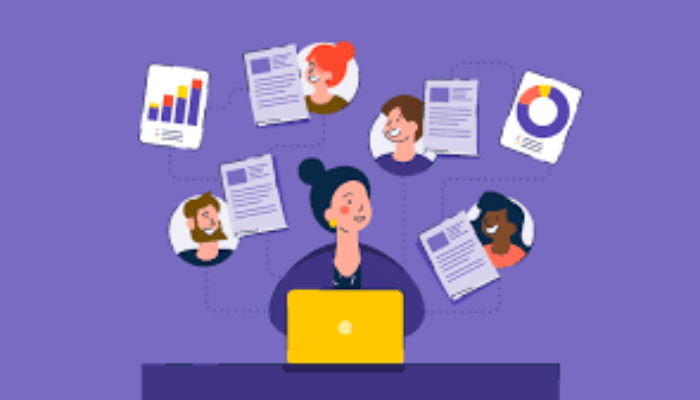
1. Silence the Sirens of Distraction:
Ever feel like your computer screen is a portal to a world of never-ending notifications? You’re not alone. Constant interruptions fragment your attention and hinder your ability to complete tasks efficiently.
A study by Gloria Mark, a professor at the University of California, Irvine, revealed that it takes an average worker 11 minutes to return to their primary task after an interruption. Imagine the cumulative impact of these interruptions throughout the day!
Here’s how to fight back:
Silence your phone notifications: Let calls go to voicemail during focused work periods. This allows you to dedicate uninterrupted time to critical tasks like screening resumes or crafting interview questions.
Utilize website blockers: Block distracting social media and news websites during work hours. Numerous free and paid website blockers are available to help you stay focused.
Communicate your focus time: Inform colleagues about dedicated focus hours to minimize interruptions. Let your team know that you’ll be unavailable for non-urgent matters during this time. This simple communication can significantly improve your ability to get things done.
Imagine you’re an HR professional tasked with reviewing applications for a highly anticipated marketing role. By silencing your notifications, blocking social media, and communicating your focus time to colleagues, you can dedicate uninterrupted time to carefully review each resume and craft insightful interview questions.
This focused approach will not only improve the quality of your work but also expedite the hiring process.
2. Milestone Mania: Break Down Big Tasks into Achievable Wins
Feeling overwhelmed by a looming project, like revamping your company’s onboarding program? Ever heard the saying, “How do you eat an elephant? One bite at a time”?
The same holds true for tackling large tasks. Breaking down projects into smaller, achievable milestones provides a clear roadmap to success. This approach boosts motivation and keeps you focused on the immediate step, preventing that feeling of being lost in the enormity of it all.
A study published in the Journal of Personality and Social Psychology found that people who set specific goals and track their progress are significantly more likely to achieve those goals.
Here’s how to make milestones your allies:
Define the Destination- Identifying the Main Deliverable
The first step is to clearly define the project’s overall goal or “main deliverable.” This is your final destination – the big picture you’re working towards. Here’s how to pinpoint it:
Be Specific: Avoid vague goals like “improve employee engagement.” Instead, aim for clear, measurable deliverables. An example could be “Increase employee engagement by 15% as measured by our quarterly employee satisfaction survey.”
Align with Objectives: Ensure your project’s main deliverable aligns with your department’s or company’s overall objectives. This ensures your efforts are contributing to the bigger picture.
Chunk It Down- Breaking the Journey into Steps:
Once you have your final destination in sight, it’s time to break down the journey into smaller, manageable steps – your milestones. Here’s how to effectively “chunk” your project:
Identify Key Stages: Think of the major phases or stages involved in achieving your main deliverable. In the employee engagement example, key stages might include developing an engagement strategy, launching employee recognition programs, and conducting regular feedback sessions.
Task Time! For each stage, brainstorm a list of specific, actionable tasks that need to be completed. This could involve researching best practices for employee engagement programs, designing recognition awards, or creating feedback surveys.
Setting Realistic Deadlines
With your project neatly chunked into tasks, it’s time to create a timeline. Assigning deadlines to each milestone keeps you accountable and ensures you stay on track for the final deliverable. Here are some tips for setting realistic deadlines:
Be Time Wise: Consider the complexity and time commitment required for each task. Don’t overload yourself – aim for achievable deadlines that allow you to deliver high-quality work.
Factor in Dependencies: Some tasks might rely on the completion of others. Identify any dependencies and sequence your deadlines accordingly.
Schedule Buffer Time: Life (and work) happens! Build in buffer time to account for unforeseen delays or roadblocks.
Imagine you’re tasked with revamping your company’s onboarding program. By breaking this large project down into smaller milestones, like creating a welcome package and developing a training schedule, you’ll feel a greater sense of accomplishment as you complete each step.
This not only keeps you motivated but also ensures you stay on track for the overall deadline.
Transforming HR through Agile Workforce Solutions
3. Multitasking Myth: Prioritize ruthlessly
Our brains are wired for focused attention, not juggling multiple tasks simultaneously. Multitasking actually reduces productivity and increases the likelihood of errors.
A Stanford University study found that people who multitask switch between tasks an average of 50 times per hour and it takes an average of 15 minutes to regain focus after each switch.
This constant task switching significantly hinders your ability to perform at your best. Instead, prioritize your tasks ruthlessly.
Here’s how to become a prioritizing pro:
Prioritize Like a Pro: Identifying and Conquering Your Most Important Tasks (MITs)
When it comes to conquering your to-do list and achieving peak performance, identifying and prioritizing your Most Important Tasks (MITs) is crucial.
But what exactly are MITs, and how can you ensure they get the focus and attention they deserve? Let’s break it down step-by-step:
4. Identifying Your HR Superpowers:
Impact Over Activity: MITs aren’t just about ticking things off your list. They’re the tasks that have the most significant impact on your overall goals and objectives as an HR professional.
Ask yourself: “Which tasks will directly contribute to achieving my team’s goals or addressing a critical company need?” For instance, finalizing the onboarding plan for a high-impact hire is likely a higher priority than responding to general employee inquiries.
Alignment is Key: Don’t operate in a silo! Ensure your MITs are aligned with your department’s overall objectives and the company’s strategic direction.
Chat with your manager or HR leadership to gain a clear understanding of current priorities and ensure your MITs are contributing to the bigger picture.
5. Schedule Like a Boss: Blocking Time for Peak Performance
Once you’ve identified your HR MITs, it’s time to carve out dedicated time in your calendar to tackle them head-on. Here are some strategies for scheduling success:
The Power of Blocking:
Resist the urge to fill your calendar with back-to-back meetings and appointments. Instead, block out dedicated time slots for your MITs. This “focus time” allows you to switch off distractions, delve deep into the task at hand, and deliver exceptional results. Treat these blocked times as sacred – no interruptions allowed!
Realistic is Achievable:
Be realistic when scheduling your MIT blocks. Don’t overload yourself with too many tasks in one session. Consider your personal energy levels and attention span. Shorter, focused sessions often lead to better results than marathon attempts.
Communicate and Collaborate:
Let your colleagues and manager know about your dedicated focus time. This simple communication helps minimize interruptions and ensures you have the time and space needed to conquer your MITs.
6. Conquer Before You Check:
The final piece of the prioritization puzzle is simple yet powerful: tackle your MITs first! Don’t let less critical tasks hijack your focus and derail your progress. Here’s why this is important:
Momentum Matters: Starting your day with a win by completing your MIT can set a positive tone for the entire day. The feeling of accomplishment fuels your motivation and keeps you focused on achieving your goals.
Prepare for the Unexpected: Life (and work) rarely goes according to plan. By tackling your MITs first, you ensure that even if unforeseen interruptions arise later in the day, the most impactful work has already been completed.
Imagine you have a busy day filled with screening resumes, conducting an interview, and finalizing an onboarding plan for a new hire.
By identifying these tasks as your MITs, you would block out dedicated time slots in your calendar to focus on each one individually. This prioritization ensures you dedicate the necessary time and attention to each crucial task, leading to a smoother recruitment process and a successful onboarding experience for the new hire.
|
Top 3 Strategies to Slay Workday Challenges |
||
|
Challenge |
Actionable Tip |
Benefit |
|
Distractions |
Silence phone notifications during focused work periods. |
Improved concentration, reduced time lost refocusing, minimized interruptions. |
|
Utilize website blockers for social media and news sites. |
||
|
Communicate dedicated focus times to colleagues. |
||
|
Overwhelm from Large Tasks |
Break down large projects into smaller, achievable milestones. |
Increased motivation, clearer roadmap to completion, sense of accomplishment. |
|
Set deadlines for each milestone |
||
|
Track progress and celebrate completing milestones. |
||
|
Ineffective Prioritization |
Identify your Most Important Tasks (MITs) |
Improved focus on high-impact tasks, increased efficiency, ensures critical work gets completed. |
|
tasks with the biggest impact on your goals |
||
|
Schedule dedicated, uninterrupted time slots for MITs in your calendar |
||
|
Tackle your MITs first thing in the workday whenever possible. |
||
Conclusion
By incorporating these top 3 strategies – minimizing distractions, setting milestones, and prioritizing ruthlessly – you can transform the way you work. Remember, even small changes can lead to significant improvements in productivity and overall work performance. So, take control of your workday, silence the distractions, and watch your efficiency soar!
Ready to take your work performance to the next level? hrtech offers a suite of innovative tools and resources designed to empower HR professionals like you. Explore our website today and discover how we can help you streamline your processes, boost employee engagement, and achieve organizational success!
